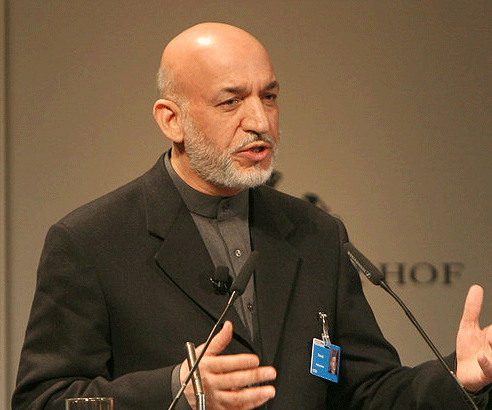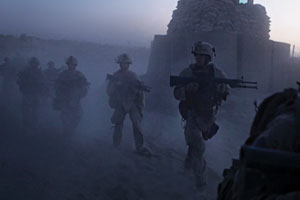
Image courtesy of Wikimedia Commons
This past weekend Afghan president Hamid Karzai revisited the controversial prospect of instigating a draft while speaking at a security conference in Munich. His hope is to boost national security forces so that, within five years, the country would “no longer be a burden on the shoulders of the international community.” But just last week, Karzai’s defense minister said his army was growing sufficiently without the help of mandatory service.
In addition to contradicting the popular notion that the transition is going smoothly, Karzai’s comments seemed to foil the counter-insurgency strategy that the top US and NATO commander General McChrystal began pushing last year. McChrystal’s strategy is to secure rural civilian areas by rooting out Taliban fighters and building safe zones for local governance. But this weekend Karzai said that the war “is not in the Afghan villages and homes. We believe this war on terror is in the sanctuaries, training grounds and the motivational factors and financial resources beyond the Afghan borders.”
Karzai’s statement came on the same day as the arrest of the deputy police chief of Afghanistan’s central province. NATO and Afghan forces acted on allegations that Col. Attaullah Wahab had been in cahoots with the Taliban, distributing roadside bombs targeting coalition troops in the north.
In the current issue of Mother Jones, correspondent Nir Rosen reports from Afghanistan during last year’s most aggressive military offensive. Click here to read Rosen’s firsthand account of how counter-insurgency is playing out on the ground. Also, check out this photo essay about Afghanistan’s Weapons Removal and Abatement teams—the brave guys charged with the thankless task of digging up unexploded ordnance all over the country.















